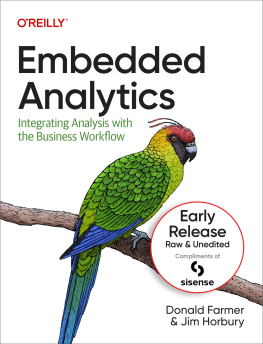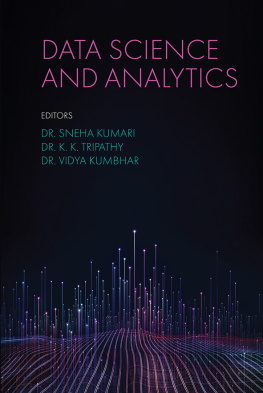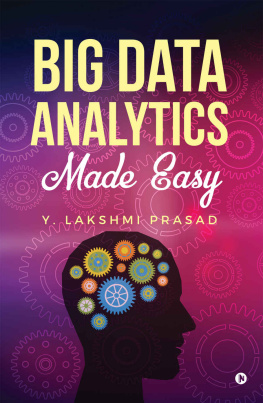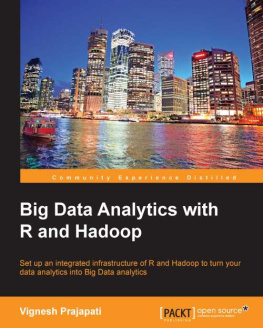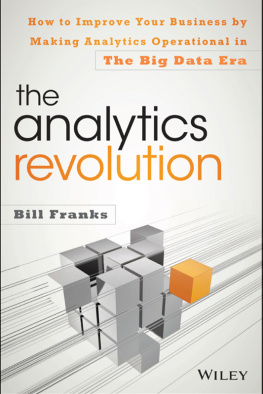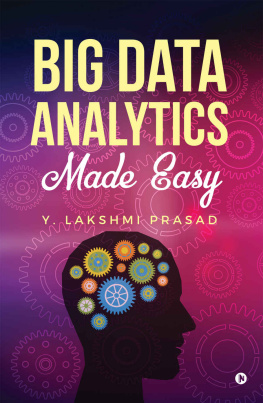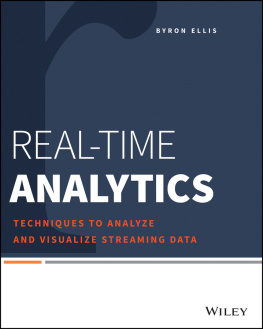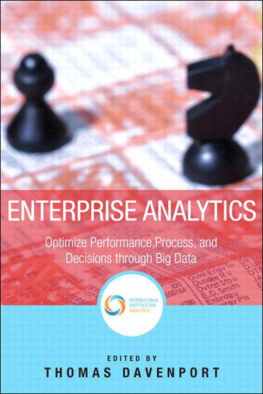Embedded Analytics
by Donald Farmer and Jim Horbury
Copyright 2023 TreeHive Strategy. All rights reserved.
Printed in the United States of America.
Published by OReilly Media, Inc. , 1005 Gravenstein Highway North, Sebastopol, CA 95472.
OReilly books may be purchased for educational, business, or sales promotional use. Online editions are also available for most titles (http://oreilly.com). For more information, contact our corporate/institutional sales department: 800-998-9938 or corporate@oreilly.com.
- Acquisitions Editor: Michelle Smith
- Development Editor: Jeff Bleiel
- Production Editor: Gregory Hyman
- Copyeditor: Penelope Perkins
- Interior Designer: David Futato
- Cover Designer: Karen Montgomery
- Illustrator: Kate Dullea
Revision History for the Early Release
- 2022-09-01: First Release
- 2022-10-25: Second Release
- 2023-01-04: Third Release
- 2023-02-14: Fourth Release
- 2023-03-17: Fifth Release
- 2023-04-21: Sixth Release
See http://oreilly.com/catalog/errata.csp?isbn=9781098120931 for release details.
The OReilly logo is a registered trademark of OReilly Media, Inc. Embedded Analytics, the cover image, and related trade dress are trademarks of OReilly Media, Inc.
The views expressed in this work are those of the authors and do not represent the publishers views. While the publisher and the authors have used good faith efforts to ensure that the information and instructions contained in this work are accurate, the publisher and the authors disclaim all responsibility for errors or omissions, including without limitation responsibility for damages resulting from the use of or reliance on this work. Use of the information and instructions contained in this work is at your own risk. If any code samples or other technology this work contains or describes is subject to open source licenses or the intellectual property rights of others, it is your responsibility to ensure that your use thereof complies with such licenses and/or rights.
This work is part of a collaboration between OReilly and Sisense. See our statement of editorial independence.
978-1-098-12093-1
Preface
Data and analytics are not only rapidly developing technologies, they also seem to be constantly in the news. So it is puzzling that industry analysts often say that the adoption of analytics technologies, such as business intelligence (BI), hovers around 25-30% of the addressable market, even while that addressable market has grown. Why is the percentage so low?
Part of the reason seems to be that analytics as a specialism may only be relevant to about 30% of the market. But analytics as a way of delivering insight and improved decision making has far greater potential. The new question then, is how to reach those underserved users.
Our answer, in this book, is that we can embed analytics into the applications that business users work with every day, making analytics part of their regular workflow, not a specialized practice. There will still be a role for analytics experts with bespoke applications, but regular users can benefit from embedding analytic features into other apps.
We think embedded analytics is an exciting field that promises to transform the way we design, build, and use software applications. It is a field that brings together the worlds of data analytics and application design, allowing us to integrate powerful analytical tools directly into familiar applications. The result is a much more intuitive and efficient user experience, which enables users to make better decisions and gain deeper insights into their data. By integrating analytics into the application design process, we can create much more intelligent and effective applications that are better suited to the needs of the user.
This book is designed to provide you with the knowledge you need to embed analytics into your applications and create a more powerful user experience.
Who Should Read This Book
We hope this book will work for a wide range of professionals who are involved in designing, building, or managing software applications that feature embedded analytics. These professionals include:
Application designersIf you are responsible for designing the user experience of an application, this book will help you understand how to integrate analytics into the application design process. You will learn how to create more intelligent and effective applications that are better suited to the needs of the user.Analytics professionalsIf you are responsible for developing or managing analytics solutions, this book will help you understand how to integrate your solutions into applications. You will learn how to create more effective analytics solutions that are more closely aligned with the needs of the user.DevelopersIf you are responsible for developing software applications, this book will help you understand how to design and build applications with embedded analytics features. You will learn how to create applications that are more intuitive and efficient for the end user, as well as how to integrate analytics into the application development process.ArchitectsIf you are responsible for the overall design and architecture of software applications, this book will help you understand how to integrate analytics into your overall design strategy. You will learn how to create more intelligent and effective applications that are better suited to the needs of the user.
To get the most out of this book, readers should have a basic understanding of data analytics and software application design. Familiarity with programming languages and application development tools could also be helpful, but not required. Overall, this book is designed to provide practical, actionable insights and advice to help professionals in a variety of roles create more intelligent and effective software applications that feature embedded analytics.
Navigating This Book
Now lets have a look at the structure of the book.
Chapters explain the background to embedded analytics, describing what a successful project would look like in terms of usability and business impact. We also put a strong emphasis on analytics as a form of decision support, so we spend some time describing how to identify the decisions to be made in an operational application and how they can be supported.
Chapters describe the software and data architectures that are needed to embed analytics effectively.
In we focus on the types of objects that can be embedded and how these objects can support different business use cases.
Chapters are concerned with administration and governance. These topics are too often overlooked, so we do spend some time explaining the details of what needs to be managed and what constitutes good management and good governance.
Chapters take a close look at some special use cases. Firstly, the most ubiquitous analytics tool of allthe spreadsheet! But we also explore machine learning, artificial intelligence, and some emerging use cases related to them.
is perhaps of greatest interest to software vendors. We look at how embedding analytics in software applications can open up new potential for revenue and even new lines of business.
Conventions Used in This Book
The following typographical conventions are used in this book:
ItalicIndicates new terms, URLs, email addresses, filenames, and file extensions.

